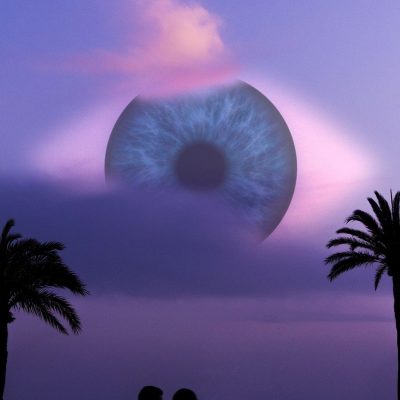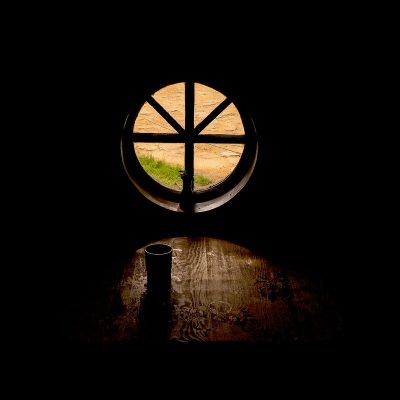Sparks of Miketz
Good Eye, Evil Eye

We begin this week’s parsha in Pharoah’s dream, the famous one of seven good calves being swallowed up by seven bad cows. This dream, which set in motion the events of Yosef’s rise to power in Egypt, had tremendous significance at the time. Rav Shapiro reminds us that it has eternal significance as well. Pharoah was the most powerful ruler of his time, and so his dream tells us something universal about the nature of the world.
What do we know about Pharoah’s dream? It is the story of tremendous good being swallowed up by evil, as if it never was. The only one who has the power to correct this is Yosef. What is Yosef’s power? When Yaacov blesses Yosef, we learn that Yosef brings bracha into the world through the power of his eyes (see Bereisheit 49:22). Pharoah brings destruction to the world through his evil eye, and Yosef rectifies it through his good eye.
In order to understand this, we first have to understand the power of our eyes. We use our eyes to partner with Hashem in creating the world. This world is a means through which Hashem can reveal Himself to us (see Vilna Gaon, commentary to Safra Ditzniusa 1:1). It therefore only reaches its purpose, its true existence, when we recognize it as an expression of Godliness. The bracha of this world is only brought to true expression through our eyes, and our ability to look at the world and say, “it is good.”
Yosef had very good eyes. No matter where life put him, even in the dungeons of Egypt, he was able to look around and see Hashem’s guiding hand. His eyes were expansive. They bestowed true existence wherever they gazed. The Mishkan, which settled in Yosef’s portion of Eretz Yisrael for 369 years, reflected this expansive nature of Yosef, in his merit. In Shiloh, sanctified food could be eaten “as far as the eye could see” (Zevachim 118b).
The contrast to Yosef was Alexander the Great. He perfected the evil eye. Where Yosef was completely connected to Hashem and saw the revelation of Hashem in all of existence, Alexander was invested in perceiving the entire physical world as completely separated from any higher realm. The Talmud (Tamid 32a-b) expresses Alexander’s essence by portraying him as knocking on the gates of Gan Eden, demanding to be let in. A voice from within tells him, “This is the gate of Hashem, only the righteous will enter” (Tehillim 118:20). Unable to enter, he demands, as King, that they give him something. He is thrown a galgaluta, a skull, or according to Rabbeinu Asher, an eyeball. Alexander attempts to measure the eyeball with a scale, but no matter what he put on the other side, the eye outweighs everything.
This eyeball was an expression of the Greek vision of the world. As we know, the Greeks, and by extension Western Culture, defined reality as exclusively what could be perceived and understood by the human mind. In this, they were the epitome of ra, bad, a word whose root is connected to the concept of separation. The definition of good is that which fulfills its purpose. The definition of bad is that which is broken off from its purpose and separated from its source. For the Greeks, what you see is what you get. There is nothing more than what we can perceive with our minds. Put another way, what they were really saying is, “I am existence itself.”
We limit ourselves and our world severely when we view existence this way. If I am all there is, what room is there for anyone else? Wars are inevitable. When I am existence, then anyone who does not serve me has no purpose. On a deeper level, this eyeball was also sending the message that when we see ourselves as the whole world, our world is not only too small for others, it is also too small for ourselves. When we are the basis of existence, we are never satisfied. The eye of Alexander always outweighs anything on the other side of the scale, because when we relate to life only through the visible realm, then we are never satiated. What we really need is spiritual, and no matter how much we amass, we can never fill that need with physical things.
Pharoah, like Alexander, looked at the world through eyes that were disconnected from Hashem. And so, even though he was given seven beautiful cows, they were immediately consumed by seven evil cows. It was as if the good cows had never existed. This is the power of the evil eye. All the best things are bestowed on our world from on high, but our own vision, our own perception, has the power to consume them, and make them as if they never were.
We always read the parshiot of Yosef at Chanukah time, as we are lighting the menorah. They are a reminder of the power of our vision. Yosef first gazed at the land of Egypt from the perspective of a slave, but he had Hashem’s name always on his lips, and so he brought success with him wherever he went. When we look at the world as a continuous revelation of Hashem, then each moment brings new life. Our eyes (ayin) become wellsprings (also ayin!) of living waters that bring us continuous rejuvenation.
Rav Shapiro points out that the time of lighting the menorah is the time of the setting of the sun (Rambam, Hilchot Chanukah 4:5). At sunset the sun, the main source of light in the world, disappears, and the world is illuminated by secondary sources, by what the sun has already illuminated. The entire world takes on an aspect similar to a lamp, lit by a source that we can no longer see. Rav Shapiro teaches, “When the Creator kindles a lamp, as it were, we too must kindle a lamp” (p.410). We light our menorah from a higher source, a spiritual light, and we use that light to illuminate the beauty of our world.



